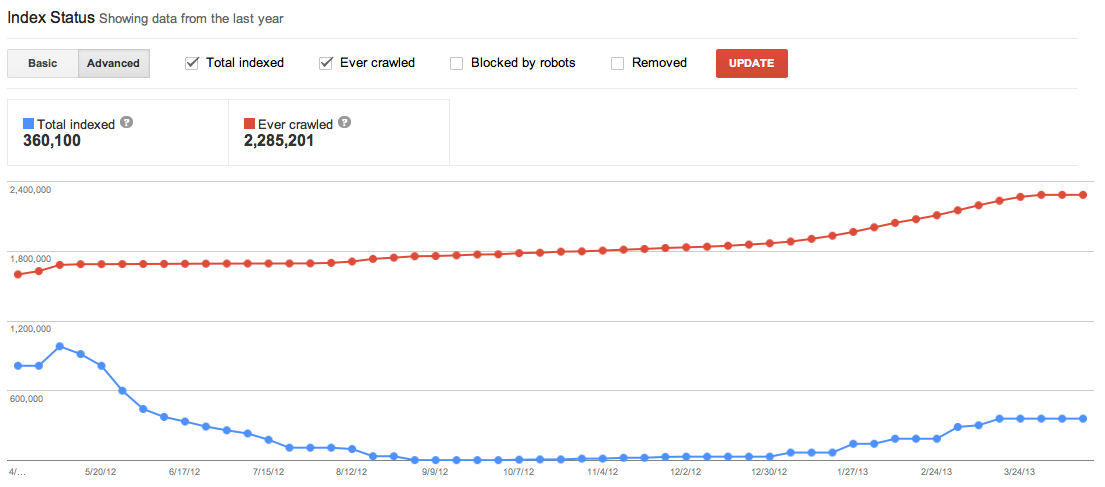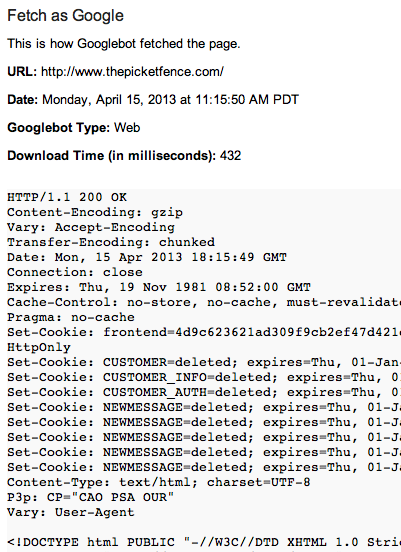If you’re not using Google Webmaster Tools yet, you should be. GWT gives you a lot of critical information about your site’s performance. These are the top reports you can get from it.
Content Keywords
This report shows you what keywords Google thinks your website is relevant to. This is priceless information, because once you know what Google tends to rank you for, you can use UberSuggest.org to get hundreds of long-tail keyword variations to add to your site. This is a great way to rank well not only for one keyword, but also for its hundreds of variations.


HTML Improvements
This report shows you how you can improve your page titles and meta descriptions.

Sitemaps
My favorite tool to create website sitemaps is XML Sitemaps. Once you’re done creating your sitemap, click on the “Add/Test Sitemap” in GWT.
![]()
Backlink Reports
As you probably already know, when other websites link to yours, it helps you rank better on search engines. These three reports show you who’s linking to you, what pages on your site they’re linking to and what keywords they’re using.

This first report shows you who’s linking to you. For this client we got links from the Post Gazette and the Northwest Indiana Times. This is really valuable information because once you know who linked to you in the past you can work on getting them to link to you again.

The “Your Most Linked Content” report shows you what pages on your website people are linking to. This is extremely valuable because once you understand what people like linking to you can create similar content.

And finally, we can also see what keywords people are using in the anchor text of their links. This is a good way to understand how people perceive your website, which is very useful when you’re pitching someone into linking to you.
Search Queries Report
This report is my favorite one. You can see very useful metrics for all your keywords: impressions (the number of times your website appeared in the search results for a given search query), the number of clicks you got and your average position. You can also see the change in the last 30 days for all these metrics.

Index Status
This report shows you how many pages on your site have been crawled and how many have been indexed. If a small portion of your crawled pages are being indexed, it’s important to understand why Google is deciding to not index most of your pages. In this case, this is an ecommerce website with a lot of similar products so we used the “rel canonical” tag to tell Google that this isn’t duplicate content. But if most of your pages have unique content and there’s still a big difference between the number of pages crawled and the number of pages indexed, talk to an SEO professional to understand why this is happening and what you can do about it.

Fetch as Google
This handy tool shows you webpages the same way Google sees them. This is very useful to understand what Google can and can’t read from your site.

Blocked Content
This report shows you what pages on your website are being blocked by the robots.txt file. It’s worth looking at this report once in a while to make sure that you’re not accidentally blocking any content you want indexed.

Crawl Errors
This report shows you all the broken links and server errors on your site. After fixing your broken links go back to GWT, select the URLs you fixed and click on “Mark as Fixed” to let Google know you took care of the problem.

Site Speed Analysis
PageSpeed Insights used to be part of GWT and it’s now a standalone product. It analyzes your site and gives you recommendations on how you can make it faster. Their recommendations are organized by priority (low, medium and high.) I absolutely love this tool.


Do you have any questions? Post them below and I’ll answer them for you. Have a great day!


